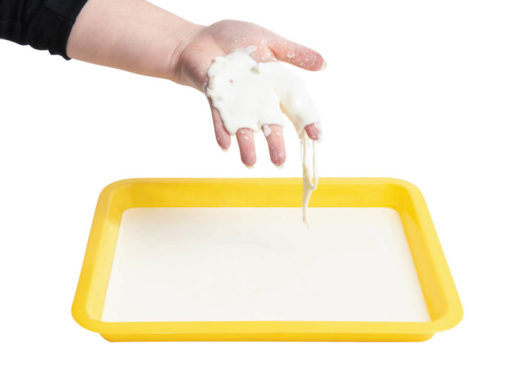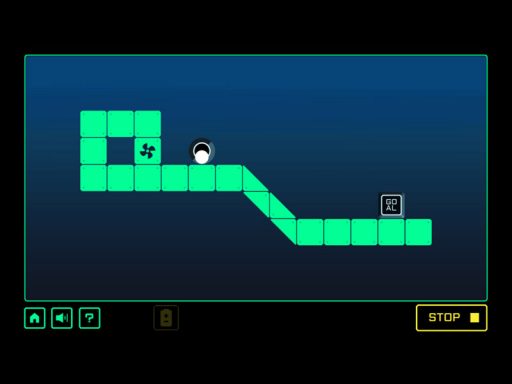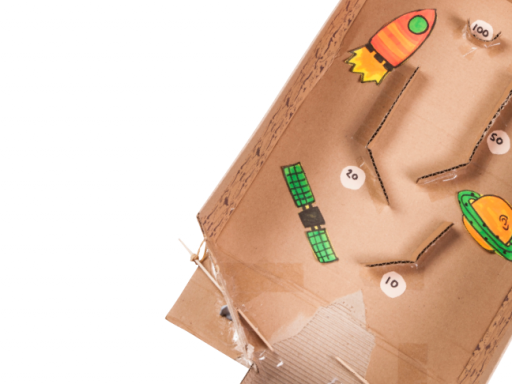We rely on electric circuits every day, in our homes, schools and places of work, as well as in our portable gadgets and kitchens. In this activity, a circuit drawn by a pencil conducts electricity to light an LED.
You’ll need to get hold of an LED, some wires and crocodile clips – these are all available cheaply online or from high street electronics shops.
Printable downloads
Follow these steps…
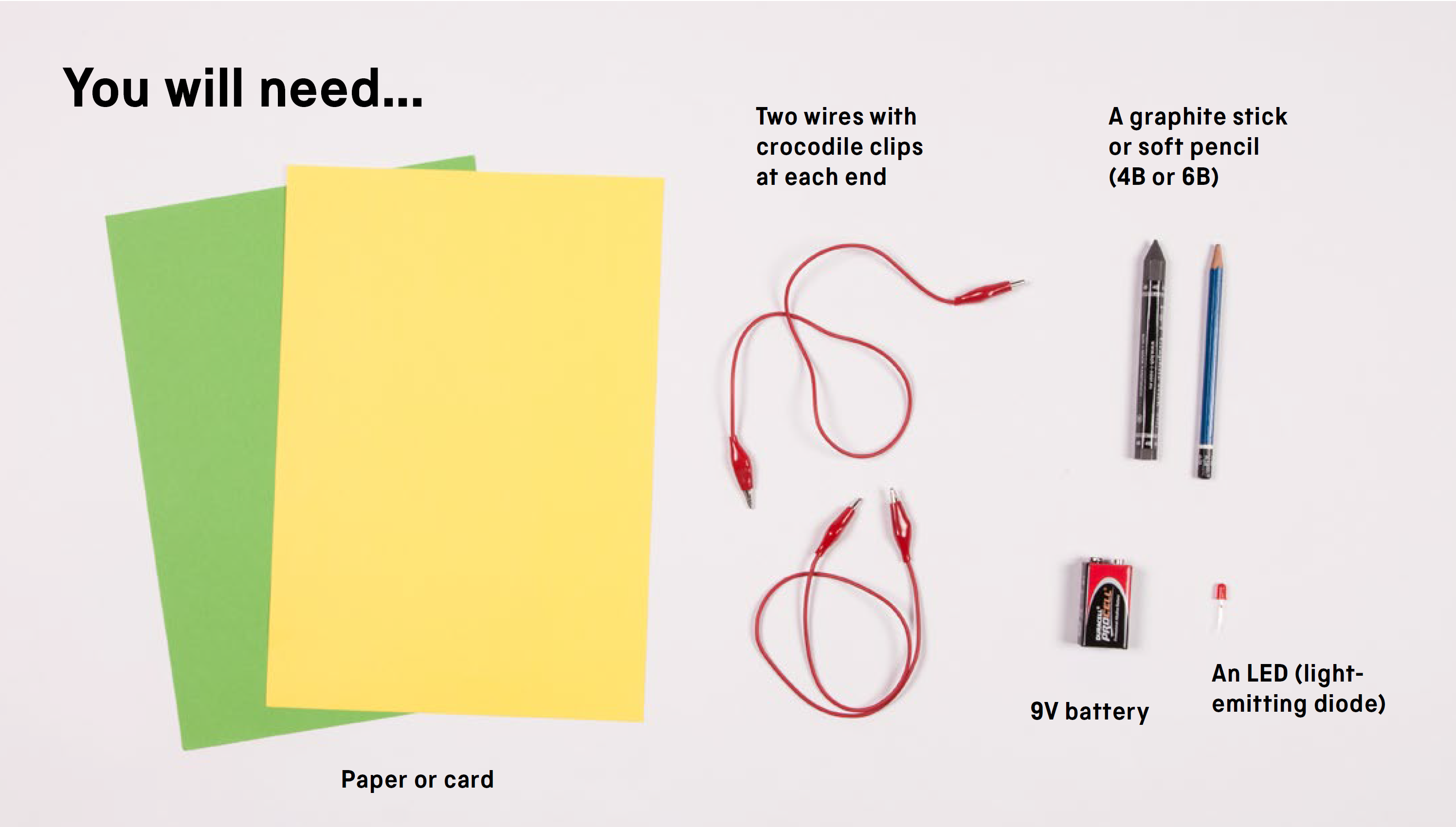
-
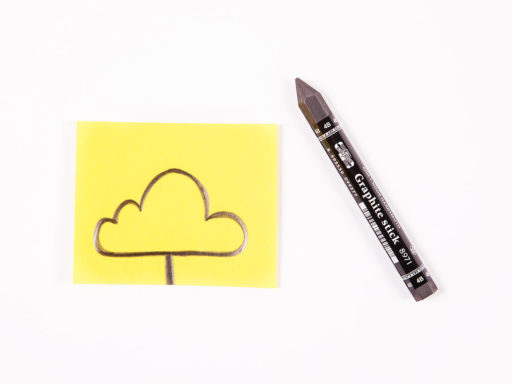 Draw a picture on the paper or card. Make sure you draw one continuous line, and press quite hard to make the lines thick. Make sure that one part of the drawing touches the edge of the paper.
Draw a picture on the paper or card. Make sure you draw one continuous line, and press quite hard to make the lines thick. Make sure that one part of the drawing touches the edge of the paper. -
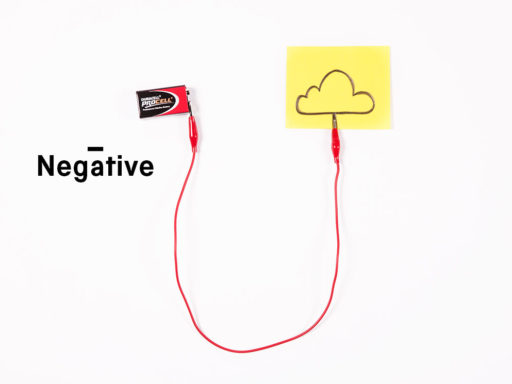 Identify the negative part of the battery (–) and connect one end of a wire to it. Connect the other end to the part of your drawing that touches the edge of the paper.
Identify the negative part of the battery (–) and connect one end of a wire to it. Connect the other end to the part of your drawing that touches the edge of the paper. -
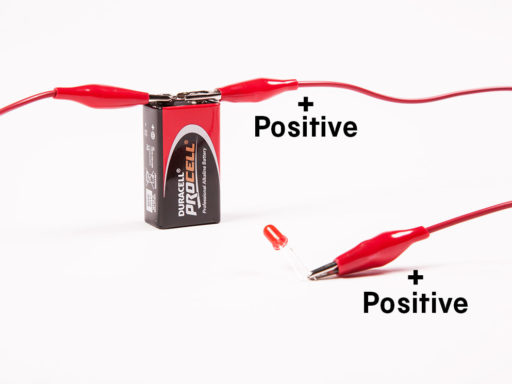 Identify the positive terminal (+) of the battery, and the positive leg of the LED (the longest leg). Connect these together with the second wire using the crocodile clips.
Identify the positive terminal (+) of the battery, and the positive leg of the LED (the longest leg). Connect these together with the second wire using the crocodile clips. -
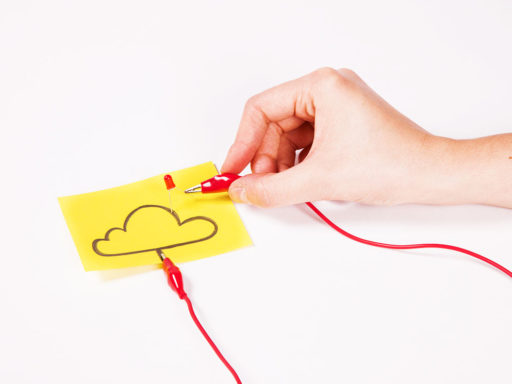 Bend the negative leg of the LED outwards, and touch it against any part of your drawing. You should see the LED light up.
Bend the negative leg of the LED outwards, and touch it against any part of your drawing. You should see the LED light up.
Think and talk about…
- Why does the LED light up?
- What happens if you place the LED on different parts of your picture?
- What could a circuit like this be useful for?
Investigate…
- What happens if you make the drawing with harder (eg 4H) or softer (eg 6B) pencils?
- Can you connect more than one LED in a circuit? Could you light up a whole picture?
Did you know?
Softer pencils, such as a 4B, have a greater graphite-to-clay ratio than harder pencils, such as a 4H.
What’s the science?
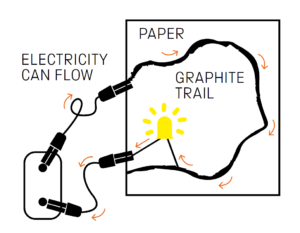 Pencil ‘lead’ is made of graphite mixed with clay. Graphite is a form of carbon, and is a conductor of electricity: the carbon atoms’ electrons can move within the material. The pencil line on the paper is a continuous trail of graphite. This trail is a route along which electrons flow – from the negative to the positive terminal of the battery – forming an electric current that lights the LED.
Pencil ‘lead’ is made of graphite mixed with clay. Graphite is a form of carbon, and is a conductor of electricity: the carbon atoms’ electrons can move within the material. The pencil line on the paper is a continuous trail of graphite. This trail is a route along which electrons flow – from the negative to the positive terminal of the battery – forming an electric current that lights the LED.
Graphite is only a fairly good conductor, and longer circuits have more resistance to current flow. That’s why touching the crocodile clip at different points along the line can make the LED brighter or dimmer.
Science in your world
 There are electric circuits throughout your home, taking electricity to and from lights, toasters, televisions and lots of other things. Those circuits are made of copper wire, not the graphite from a pencil.
There are electric circuits throughout your home, taking electricity to and from lights, toasters, televisions and lots of other things. Those circuits are made of copper wire, not the graphite from a pencil.
Pure graphite is made of carbon atoms only, connected together in hexagonal rings that form sheets. In 2004 scientists in Manchester discovered a form of graphite called graphene, which is a single sheet of graphite one atom thick. Graphene is 200 times stronger than steel, transparent and flexible. It’s the thinnest and most conductive material known – and it’s flexible and cheap. It could help engineers develop flexible smartphones and plastics that conduct electricity.
